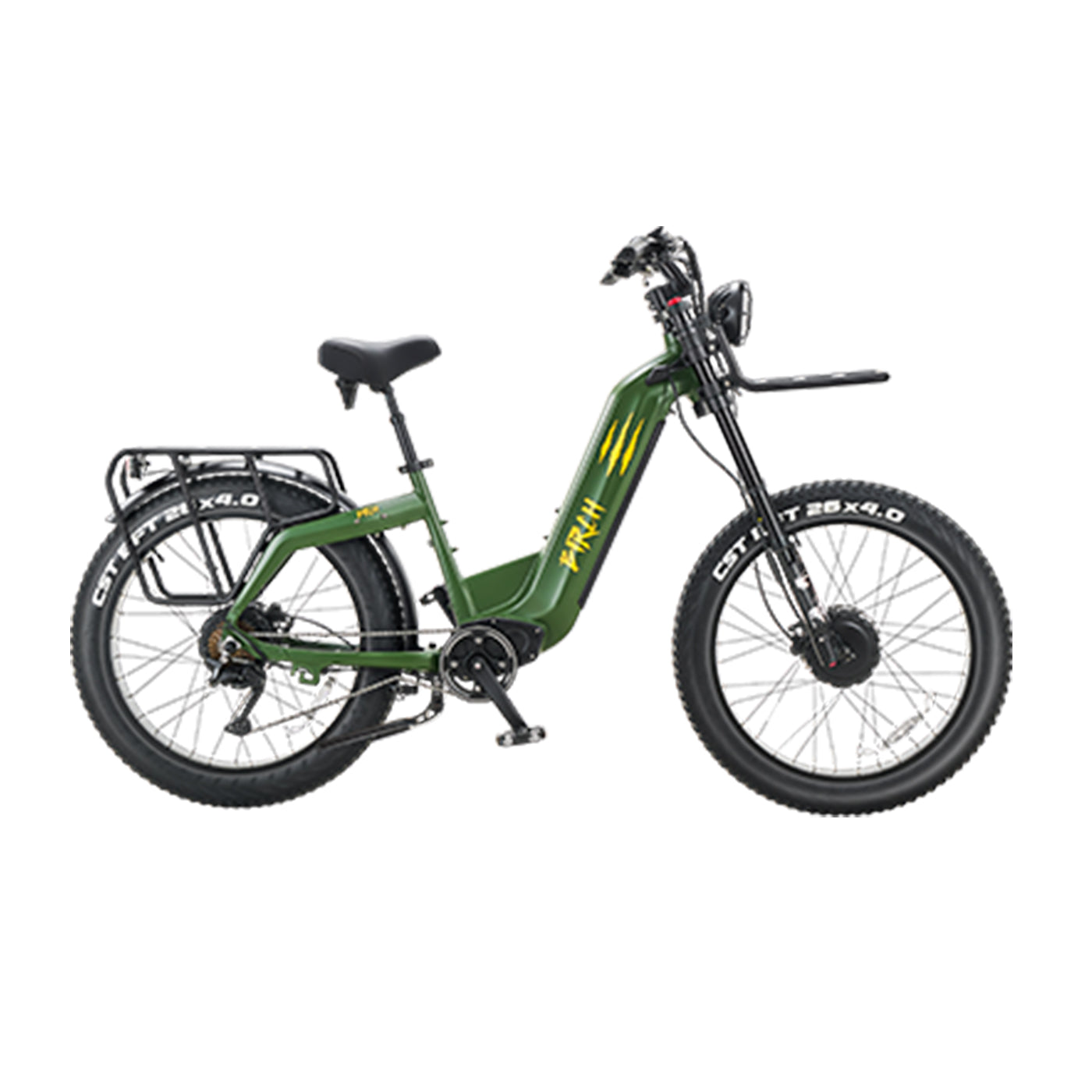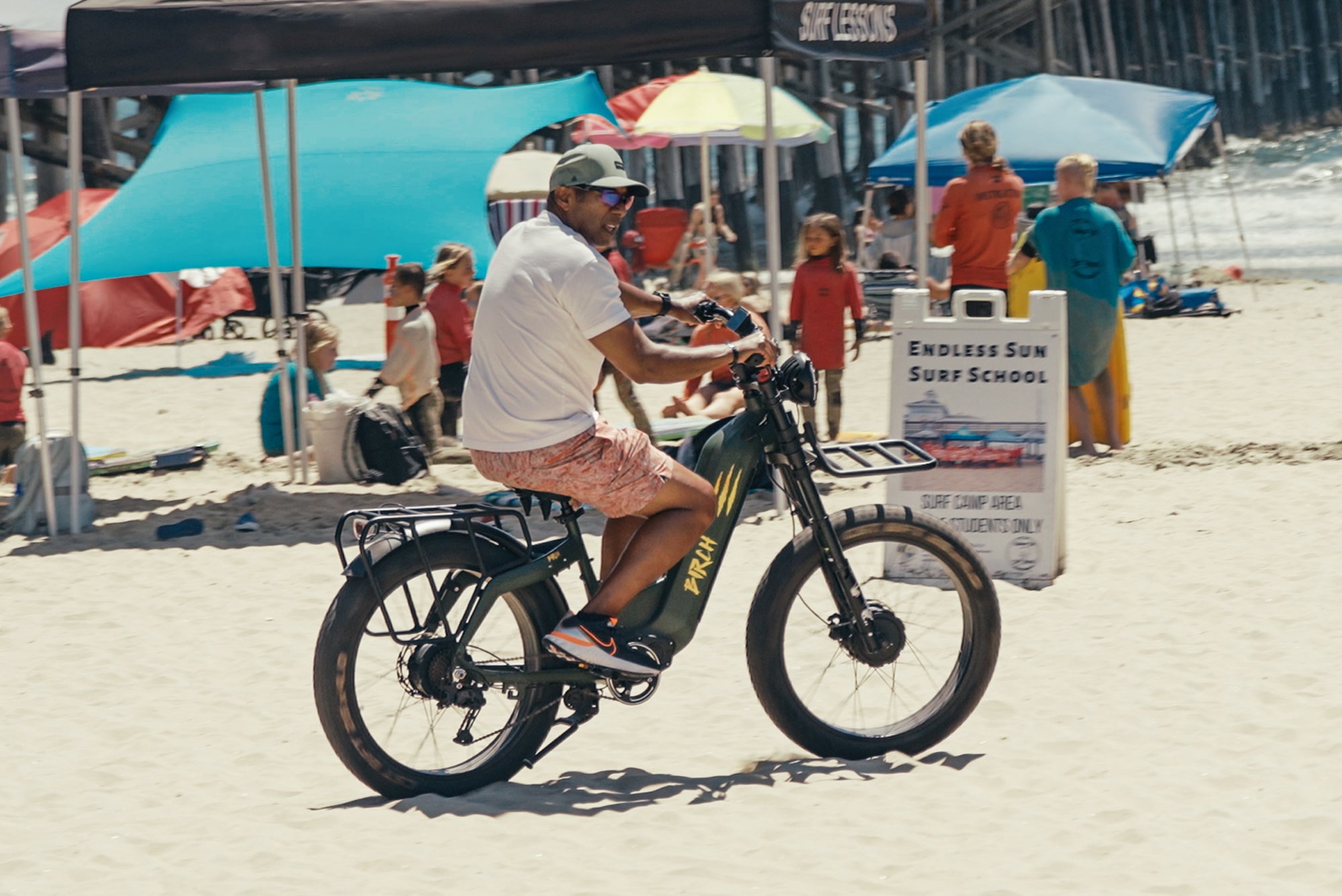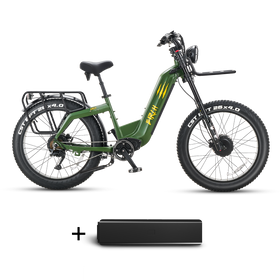Your Ultimate Guide to Hunting bike Maintenance
We know that every hunt is a thrilling adventure for you, but oftentimes the rough terrain is a lot less fun for your bike. Worry not! We’re going to show you our top tips and tricks in making sure your bike stays in good condition, and is always ready for the next hunt. Following our electric bike care routine will help prevent breakdowns, allow you to ride safer, and extend the life of your bike greatly.
Essential Tips
Clean Your Hunting Bike Routinely
Why:
In the heat of pursuit, your hunting bike collects dust, mud, and dirt from the ground, which spreads and sticks to various parts and components. Leaving these contaminants on your bike could cause irreversible damage to it. The very first step of proper electric bike maintenance is to clean the bike up!
How:
- Routinely clean your bike with water to wash off any contaminants and debris. Make sure to use bike-specific cleaners so that unwanted damage to components can be avoided.
- Use hard brushes to clean dirt and mud clots stuck to the frame, wheels, or other parts of your bike.
- Remember to wipe down the bike afterwards with a dry cloth, so that components won’t be drenched in water.
- Pay very close attention to the drivetrain area specifically when cleaning, because even small specks of dirt can affect your hunting bike’s performance.
Upkeep Your Battery
Why:
The battery is the center of your bike’s entire electrical system. Taking care of it extends the longevity of your bike, and lowers the chances of electricity-related performance issues. This makes it one of the most essential steps when it comes to ebike maintenance.
How:
- Always use the charger your bike’s manufacturer provided to avoid unwanted issues, and make sure to stop charging after the battery’s already full.
- When you won’t be riding your bike for a while, keep the battery level between 25% to 75%, and let the battery sit in a cool, dry place for storage.
- Occasionally wipe the battery contacts to ensure connectivity. Never use water when doing so to prevent corrosion.
Check Your Motor(s)
Why:
Your motor is your best friend when challenging rougher terrains. Keeping it in good shape helps ensure your riding experience, and lowers the chances of motor failure, which is something you do not want happening while riding.
How:
- Always be on the lookout for unusual noises or vibrations coming from your motors. If you notice something strange, try to reach customer service, or go directly to professionals.
- Clean your motor area regularly and make sure that there are no dirt or mud buildups. Be careful when using water, as smaller components have a chance to be damaged.
- Routinely have your motors checked at a repair shop for any underlying issues.
Maintaining Your Brakes, Gears and Drivetrain
Why:
Brakes and Drivetrains work together with bike motors to provide acceleration, shifting and braking functions. If any one of these components are faulty, not only would the riding experience be subpar, your safety would be compromised as well.
How:
- Routinely lubricate the drivetrain area for smooth riding. Be wary of over-lubricating as that can lead to buildups and slow the bike down.
- Make sure that your gear shifting is still accurate. Misalignment occurs randomly, so check frequently and whenever you feel that something’s off to quickly adjust the bike back to normal.
- Regularly check the brake pads and their condition, along with the brake cables and their connectivity. These brakes are extremely crucial when it comes to protecting you, especially in outdoor scenarios where the terrain is rugged and uneven.
Checking Your Tires and Wheels
Why:
Tires and wheels are responsible for traction, which ties into both your riding experience and the bike’s performance on rugged terrain. Properly taking care of your tires and wheels ensures a much safer and smoother ride.
How:
- Check your tire pressure before each ride, and adjust accordingly to your planned routes.
- Routinely check for wounds on your tires, including punctures, tears, or stubborn debris. If tires become harder and harder to clean, consider replacing them with new ones
- Check if the wheels are spinning freely, and that there is no deformation before you ride. Also be wary of loose spokes, as this would cause the bike to become unstable.
Checking the Frame and Suspension
Why:
When riding off-road and going in and out of hunts, stability is something that every hunter wants to see on their bike. Taking care of the frame and suspension of your bike is the key to riding stable.
How:
- Regularly check for dents, cracks, tears, and other forms of damage on your frame, especially on joints and places requiring welding.
- Check if the suspension is working properly before riding. Make sure that it is adjusted suitably depending on your planned route, and lubricate it if you notice stiffness.
Conclusion
Upkeeping your electric bike for hunting is more than just cleaning or checking for errors; it ensures that every hunt, every adventure you take on is a safe and rewarding experience. Although routine checks and regular cleaning is a hassle, staying on top of these things will help avoid unexpected issues, some of which puts riders in situations they would never want to be in. With these tips in mind, we hope that you would be able to focus on what truly matters: going out, experiencing the wilderness, and enjoying the thrill of the hunt!


















Leave a comment
All comments are moderated before being published.
This site is protected by hCaptcha and the hCaptcha Privacy Policy and Terms of Service apply.